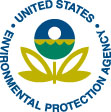 |
Cost and Performance Report:
Soil Vapor Extraction at the
Hastings Superfund Site,
Well Number 3 Subsite
Hastings, Nebraska
|
Back to Treatment System Cost
| Table of Contents |
Forward to References
Cost Observations and Lessons Learned
- Actual costs for installing and performing the SVE
application, including disposal costs for the GAC, at the Well Number 3 Subsite
were approximately $370,000, which corresponds to $620 per pound of
CCl4 removed (600 pounds
CCl4 removed) and $2.00
per cubic yard of soil treated.
- Actual costs were 17% less than originally estimated.
According to the RPM, cost savings were realized in the following areas:
- The SVE system worked better than expected, removed the
contamination faster than expected, and was on-line about 2/3 of the time.
- Savings were realized by using local construction
contractors to provide oversight during the operation phase of the system. The
involvement of the ARCS contractor was limited to phone conversations. Limited
site travel was required during remediation phase. Costs were saved by
utilizing a local chemist to perform chemical monitoring, and by utilizing a
Region VII laboratory to provide off-site analysis.
- The strong partnership, involvement, and commitment, between
EPA and the State of Nebraska on this project allowed operating decisions to be
based upon system performance and through an interactive decision-making
process.
- The ability to use one contract vehicle from design to
project completion. One ARCS contractor designed the system and then performed
project oversight. Subcontractors procured by the ARCS contractor performed
well.
Performance Observations and Lessons Learned
- Soil vapor extraction met the remedial action cutoff
extraction rate (0.001 lbs/hr) to remove carbon tetrachloride contamination at
this operable unit within approximately 6 months of system operation. No
CCl4 rebounding effects
were observed after a 2-month shutdown period.
- More than half of the contaminant removal occurred during
the first 22 days of system operation.
- The RPM indicated that it is likely that the mass of VOCs
removed by the system was greater than shown by the field results, based on the
following information:
- The EE/CA determined that 400 pounds of CCl4 was estimated to be present;
- Results from Westates Carbon determined that the three GAC
canisters contained 19% VOCs (approximately 570 pounds of VOCs);
- The use of 10-mL syringes to collect gas samples from the
vacuum side of the system during operation (approximately 7 in. of Hg); and
- The off-site confirmation testing which indicated that the
on-site sampling had a negative bias of approximately 50%.
In addition, the RPM indicated that the on-site gas
collection method, while quick and inexpensive, likely resulted in the dilution
of the gas sample during sample collection. The RPM estimated that a total of
approximately 600 pounds of CCl4
were removed by the SVE system at the Well Number 3 Subsite during both the
treatability study phase and the remedial action phase.
Other Observations and Lessons Learned
- The full-scale system, designed based on the results of the
treatability study, was implemented without modification. The treatability
study results predicted that a 2-year operation period would be required to
remediate the site. The full-scale system achieved the cleanup goals in less
than a year.
- For the soils at Hastings, modelling was not reflective of
system performance. The modelling predicted a radius of influence of 300 feet
for the SVE wells; however, the actual radius of influence was found to be at
least 1,500 feet for the system (based on an analysis of the source for
additional contaminants removed by the SVE system).
- The on-site analytical protocol was not reflective of actual
contaminant concentrations in the extracted soil vapors towards the end of the
remediation (i.e., for lower concentrations of VOCs). For lower VOC
concentrations, a larger sample volume is needed (e.g., a 6-liter
SUMMATM canister).
- According to the RPM, the SVE system was sufficiently
flexible to allow the sequential pumping of the system. Sequential pumping was
desirable for the following reasons:
- When two or more wells are located close enough to each
other that their areas of vacuum influence overlap, a small "dead
zone" will occur where soil gas will not move toward either well; and
- After an extended pumping period, the rate of VOC diffusion
from the soil or soil pore water matrix to the soil gas may become the limiting
factor in the ability to remove VOCs from the vadose zone (the system becomes
"diffusion limited"). In this case it is usually beneficial to stop
pumping to allow time for equilibrium to be established between the VOCs in the
soil/pore water matrix and the surrounding soil gas (i.e., rebounding).
- EPA issued the ROD for groundwater Operable Unit 13 on June
30, 1993, which required groundwater extraction and treatment. EPA initiated a
groundwater 30-day treatability study in April 1994 utilizing monitoring well
CW-1. Groundwater monitoring results indicated that the levels of
CCl4 found in monitoring
well CW-1 varied from a high of 1,400 µg/L (one time), to levels between
100-150 µg/L prior to EPA’s treatability SVE action. Levels continued
to drop and in June 1993 were approximately 20 µg/L. During EPA’s
39-day treatability study/pump test, using monitoring well CW-1, the levels of
CCl4 in the well
averaged less than 5 µg/L. [22]
Back to Treatment System Cost
| Table of Contents |Forward to References
References
22. Comments
submitted by Diane Easley of EPA Region VII on
February 9, 1995.

